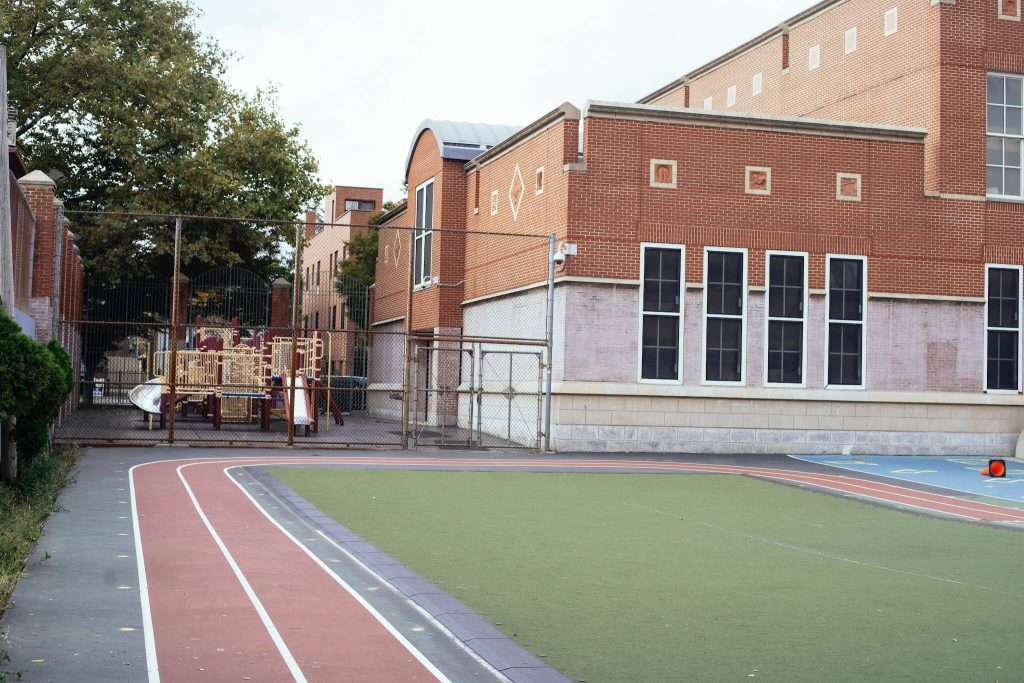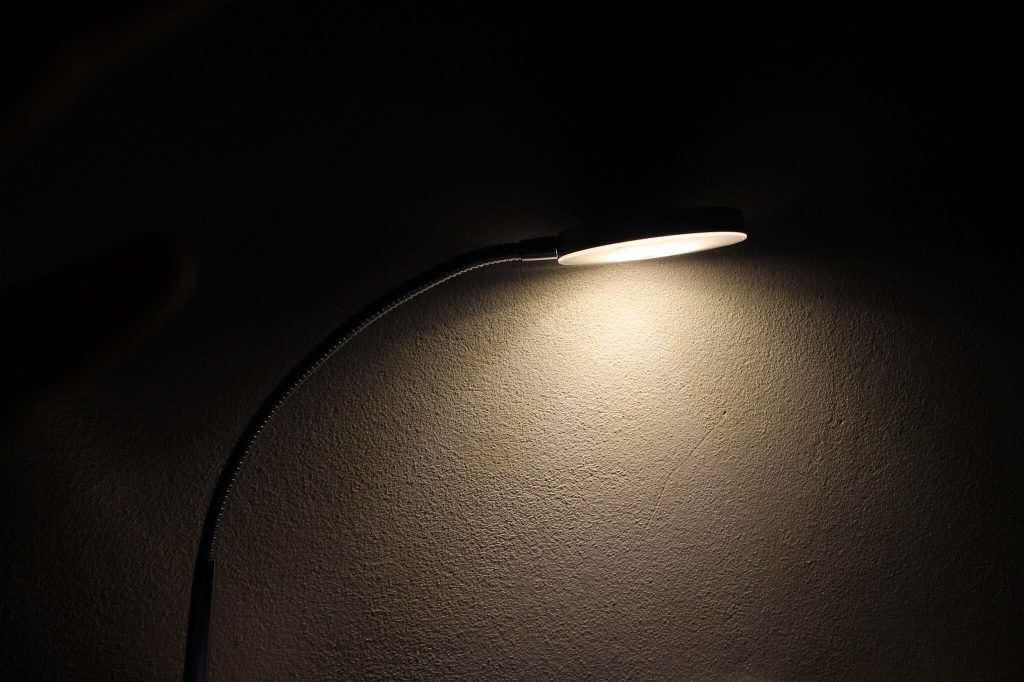Students may not know how important a great study space is until they’ve gone without one for a semester. And if you think that having a bad study space doesn’t impact your grades, let me tell you this: it does. A well-lit space with sufficient seating, good desk organization, and no distractions can make all the difference between earning that A+ and getting a C-.
The first step to creating the perfect study space is figuring out how you actually learn best. Are you an auditory learner who sings along to Taylor Swift while you memorize French conjugations?
A kinesthetic learner who becomes most comfortable while bouncing on a mini-trampoline? Or do you prefer to learn through smell and need your personal space saturated with cherry-scented candles?
Study spaces may vary, but there are some common elements shared by all great study spaces. Here are seven tips on how to create a study space that – with a little bit of elbow grease – could be the envy of your associates and classmates alike.
When you think about a study space, visions of pristine whiteboards, shiny new desks, and stacks of friendly-looking books likely come to mind. But what separates the good study spaces from the great study spaces? At a glance, the two might look quite similar.
Also Read: Best Ways to Make Study Flash Cards
The difference is in the details, and that’s where you come in. Study spaces are often overlooked when decorating, yet the right kind of study space can take hours of a student’s time to go by in the blink of an eye.
A comfortable study space is not only a place for studying. It’s also a destination – and with careful planning and inspiration from others’ ideas, it can become a pleasure even to walk into your room.
People say the difference between a good student and a great one is that a great student creates a great study space. What’s your study space like? Is it helping or hurting your studying?
In this guide, we’ll walk you through creating the perfect study environment using four key principles: the right material, the right atmosphere, staying focused, and keeping everything in its place. In this guide, you’ll discover what makes a good study space, including key seating and lighting.
We’ll also show you examples of how to include elements that promote concentration, organization, comfort, and good posture. Designing a great study space is often the difference between studying regularly and every day or barely studying at all.
Study spaces are so important that not only do we need to think about how they’ll help us with our schoolwork, but we also need to create an environment that’s conducive to studying.
By understanding what some of the most important principles for study spaces are, you can be more intentional with creating your own study space to match your learning styles and needs!
The 4 Types Of Study Spaces
There are several different types of study spaces, and I think they’re worth differentiating between. The first is the full library study space, available at all campuses, and which I think is relatively self-explanatory.
The second is the on-campus student center or other building with large open study areas. These areas tend to require that you buy something from the snack bar, but they’re still a good place to get away from the dorm for an hour or two to focus on classwork.
1. The Library

The library is the main place in my college where students congregate to study together. It was also the only place where you could go to read, text, or write an email without being interrupted.
Students usually chose to work quietly in their respective areas–some with earphones on and bent over a laptop, some with earphones on and bent over a notebook paper, some sitting cross-legged on the floor surrounded by stacks of books, and some just reading a book with no distractions.
The library is quiet, and studies are hellish. It’s divided into different noise level zones, ranging from “collaborative” (talking at a normal volume allowed) to quiet (whisper only if necessary) to silent (don’t you dare even cough). Books surround you! I don’t think there is much that can stop the feeling of walking into a library.
The smell of the books, which always makes your nose crinkle, envelops you. And, if you are lucky enough to go on a day where the windows are open, fresh air fills your senses.
The library is a spacious table that offers an effortless way to work in public. The two curved working areas are large enough to hold your laptop and all of your writing materials. It has a built-in Ethernet cable port for added convenience and features drawers for charging accessories while still having access to them.
The library is a space with no distractions. This is where you come to get away, to study, to read a novel, and more. We have vending machines inside for those late-night snacks and free wifi. Most of our employees are fairly new and very friendly. If anyone offers you help or if you happen to see me around, I’d be happy to lend a hand.
2. Academic Buildings

Colleges have “math labs” where students can complete math homework and get help from tutors. Students can also access STEM labs in similar ways. If you are taking a class in one of these fields, I encourage you to take advantage of all the resources the department provides.
All the academic buildings are accessible from inside your dorm, and many have special study areas, like the math lab, which is furnished with elliptical machines and free weights. Whether you need a place to study or simply need a question answered, we have a building for that. Our Academic Buildings are designed to provide guidance and resources for all of your academic needs.
Whether you’re looking for tutors, paper-grading services, or simply a quiet place to study, our buildings are here for you. One of the primary features of the math lab at my college is that it was highly accessible for those with disABILITIES.
It contained a special chair that you could sit in to rest your legs and feet while working. The chairs could vibrate somewhat, allowing you to feel the vibrations through your legs so that you could understand what the teacher was talking about more easily.
There was also an electronic board used by Phys Ed students that you can see from anywhere in the room instead of having to walk from one part of the room to another.
3. Miscellaneous Places On Campus

The best study places on campus are the library and your dorm. Usually, these are the two most convenient places. However, if you can’t make it to either one of these places to study, there are some auxiliary areas you can use as long as you move around every hour or so. Some good places are the student center lounge (lots of seating), under a tree on the quad, or a table in the dining hall.
The student center lounge is a great place to study for shorter periods of time, but for longer study sessions, I would recommend the library or your dorm. The AC is usually strong in the dining hall because it’s centrally air-conditioned. You can study outside under some trees, but you need to keep an eye out for squirrels or people flying a kite.
The best places to study are probably the library or your room. Some people prefer meeting others in social areas like student center lounges, etc. Forget finding a quiet spot in your dormitory or residence for studying on campus!
The Convocations Program has set up a series of “study pods” across the UC Davis campus. These spaces are designed to give you a place to work or study quietly, uninterrupted by distractions. Each space is equipped with comfortable chairs and tables, power outlets, and wireless internet access.
4. Off-Campus

Off-Campus is where you make it. The coffeehouse’s abundant natural light and hardworking atmosphere invoke an air of productivity, making it the perfect place to focus on any number of distractions: a homework assignment, an idea for a paper, or your favorite blog—fuel up on caffeine, tea, and snacks to make it through those late-night studying sessions.
In this guide, we’ll suggest some great work-friendly coffee shops for those of you who prefer to study off-campus. These spots are quality coffee shops that also offer free wifi and comfortable seating for work sessions that last a few hours. All of the places we’ve listed are within a short walk from campus, and all of them allow you to stay as long as you want without having to buy more food or drink.
4 Steps To Create A Study Space In Your Room
With four steps, you can create a study space in your own room. First, you will need to decide what your study will look like, as well as any necessities. Then, you can set up your study space the way you want and purchase anything else that will be helpful to have nearby.
Finally, it’s important to actually USE the study space for practice and pleasure. The tips I provide below are things that I did with my own college-like setting, but these are only suggestions! Put your own personal touch on the space, so it feels like something that is just for you.
1. Remove All Distractions

Remove all distractions from your study area. Remove anything that you do not need and take away the temptation. For example, put them out of sight if you are using your computer or TV. Create a tidy, organized, and clean environment, clear off your desk-top (or tabletop). Create a space in your home where you can focus and study.
Your first concern should be eliminating all distractions. The point of having a study space is to have a place where you’re not worried about what might distract you, such as the TV, internet, or cell phone. All distractions; TVs, phones, video games, and computers are distractions. Not only do they hinder your ability to study but also the quality of your study session. You should have a quiet place to study where all forms of communication are reserved for breaks.
2. Have Easy Access To Everything You Need Before You Start

Contemporary college dorm rooms are large and open, making it difficult to create a space that’s functional for studying. With so many materials in such a space, it can be hard to find your books or notes in the first place.
Follow these tips to create a space that gives you easy access to what you need before you start working. Take only what you need. Organize your materials—group like with like. Then, place your materials in an easy-to-reach location and keep your space organized by following these four steps to creating a study space in your room.
3. Experiment With Lighting

There’s a lot of wasted space in the typical bedroom. If you want to be able to study in your room, it is important for you to get as much light as possible. You may want to consider hanging up a white sheet above your bed or buying a standing lamp with many light bulbs. When attempting to create a study space in your room, there are also many different ways that you can use your furniture.
For example, you could move your desk by the window so that you have sufficient light for reading and writing. Creating a well-lit study space in your room can take 5 minutes and will make a huge difference in your ability to focus and succeed at school. It’s also easy to do. Follow these four steps, and you’ll have improved the lighting in your room in no time.
4. Adjust Your Study Space To The Ideal Temperature

Study space in your room may be the difference between stressed-out and happy. To make sure you always have fun studying, make your environment ideal for studying by making it warm and inviting. Here are our four steps to a study space that gets you into a more relaxed state of mind.
Create a comfortable and productive study space by adjusting your room temperature, dimming or turning off unnecessary lights, creating comfortable seating, and choosing the right lighting for each task.
Whether you’re in your dorm room, at the library, or in your apartment, having a study space that works for you is really important. To make sure your study space is set up for success, we put together four steps to creating a study space in your room.
